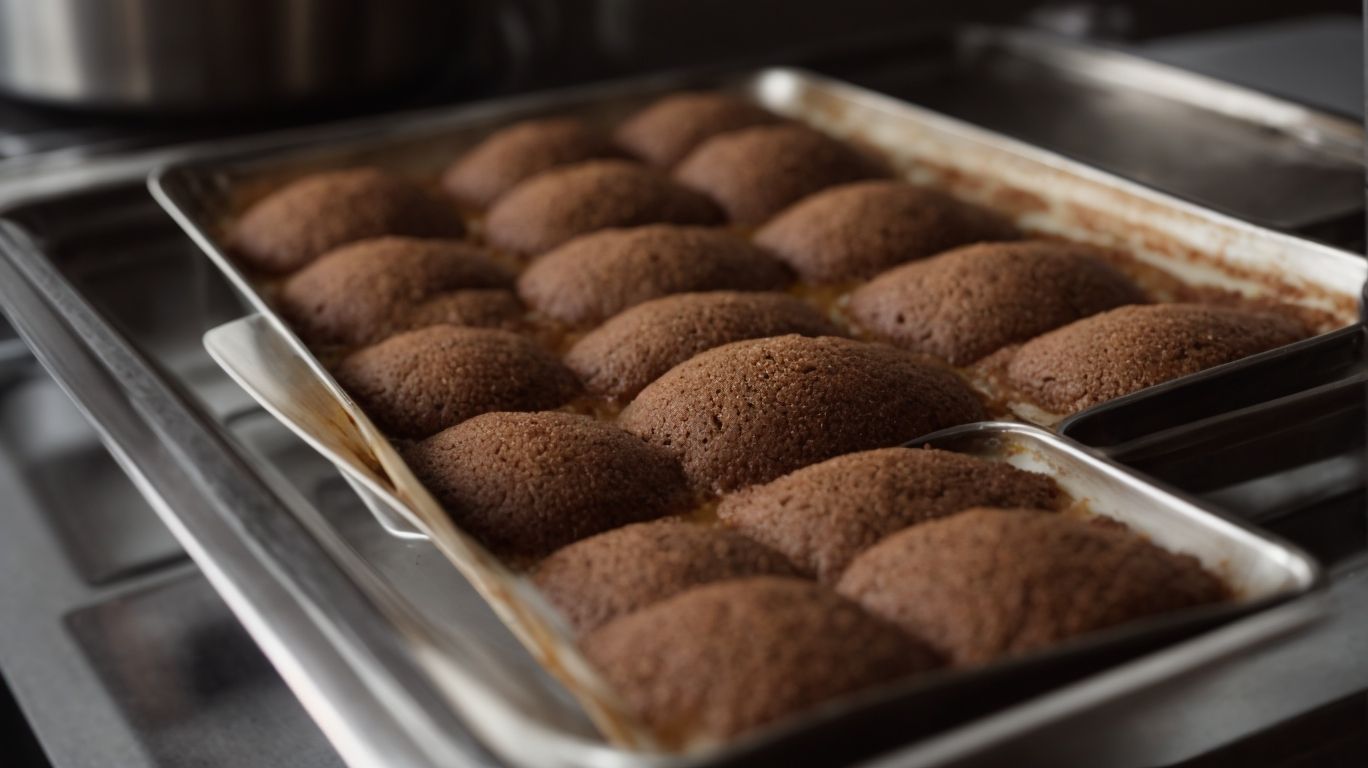How to Bake Kibbeh in Oven?
Have you ever tried Kibbeh before? This Middle Eastern dish is a delicious combination of bulgur wheat, spices, and meat, baked to perfection in the oven.
We will explore the essential and optional ingredients needed to make Kibbeh, as well as the step-by-step process of preparing and baking this savory dish.
Our tips and tricks will help you achieve perfectly baked Kibbeh every time. Let’s get cooking!
Key Takeaways:
What is Kibbeh?
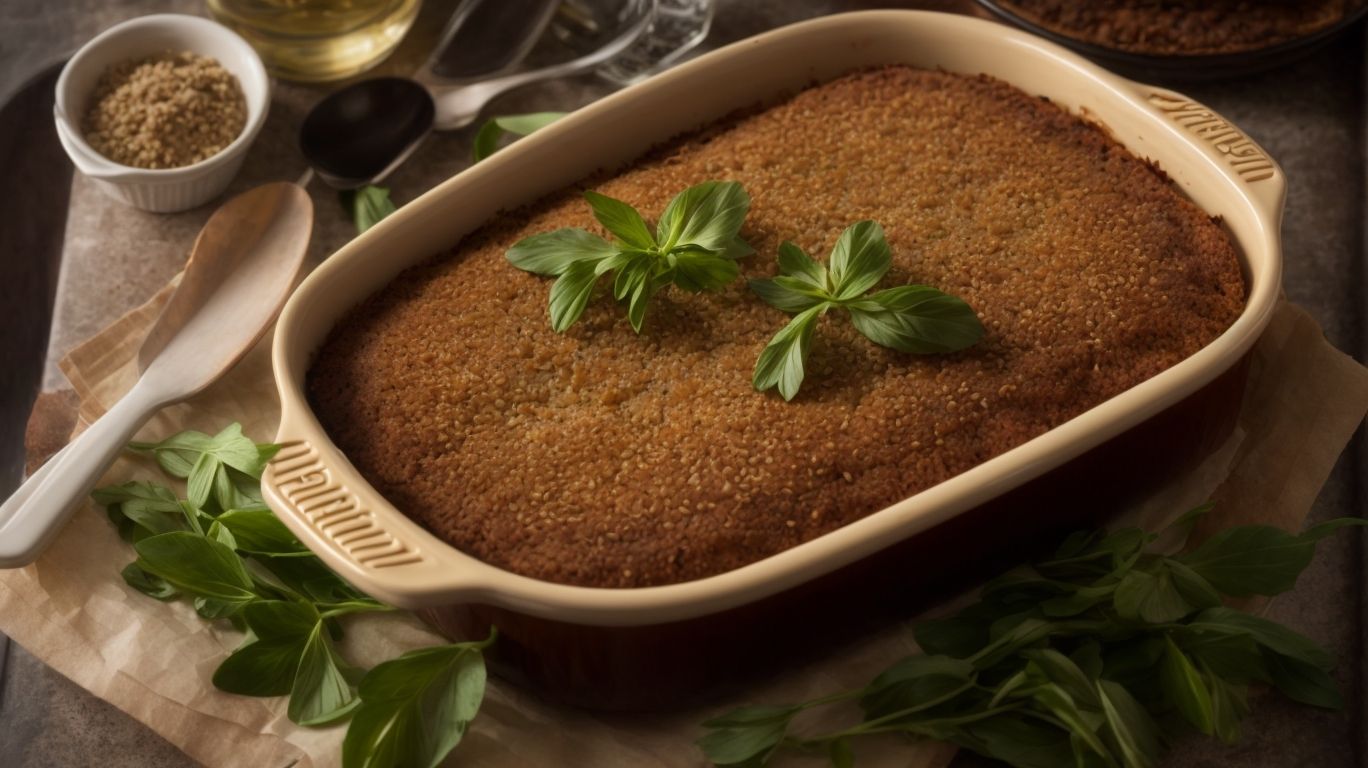
Credits: Poormet.Com – Wayne Lee
Kibbeh, a traditional Middle Eastern dish, is a blend of bulgur wheat, ground beef, and aromatic spices, often baked to perfection. Lebanese cuisine is particularly known for its variations of kibbeh, including raw kibbeh that’s served with seasonings like allspice and cumin.
This iconic dish, originating from the heart of the Middle East, holds deep cultural significance and is a staple in Lebanese households. The process of making raw kibbeh involves meticulously hand-grinding the ingredients until a smooth, paste-like consistency is achieved. Once prepared, this savory mixture is often formed into oblong or round shapes, with a hollow center filled with a tantalizing mix of pine nuts, minced meat, and spices.
The baked version of kibbeh, known for its crispy exterior and moist interior, showcases the culinary mastery of blending flavors and textures. It’s not uncommon to find families gathering around to enjoy a steaming tray of freshly baked kibbeh, each bite offering a burst of savory goodness that’s unmatched in the realm of traditional Middle Eastern fare.
Ingredients for Baking Kibbeh in the Oven
When preparing Kibbeh for baking in the oven, essential ingredients like ground beef, bulgur wheat, and an array of Middle Eastern spices come into play. Variations like Lebanese Baked Kibbeh may involve ingredients specific to family recipes passed down through generations.
Ground beef serves as the base for the savory filling, typically combined with bulgur wheat to create a rich and textured interior. The amalgamation of traditional Middle Eastern spices, such as cumin, allspice, and cinnamon, lends the dish its distinctive aromatic profile, infusing it with warmth and depth of flavor.
Some culinary renditions of Kibbeh incorporate the clever addition of small meatballs within the mixture, enhancing each bite with bursts of succulent meatiness. These adaptations demonstrate the versatile nature of Kibbeh, accommodating various tastes and regional influences.
What are the Essential Ingredients?
The essential ingredients for baking Kibbeh include high-quality ground beef for richness, nutritious bulgur wheat for texture, finely diced onions for flavor, and aromatic spices like allspice and cinnamon for that signature Middle Eastern taste.
Ground beef forms the heart of Kibbeh, providing a luscious and savory base that melts in your mouth with every bite, adding a depth of flavor that is truly satisfying. The bulgur wheat, on the other hand, not only contributes to the dish’s unique texture but also imparts a subtle nuttiness that complements the richness of the meat.
The addition of onions brings a delightful sweetness and depth to the Kibbeh, enhancing its overall taste profile and creating a harmonious balance of flavors. Meanwhile, the aromatic blend of allspice and cinnamon infuses the dish with warm, earthy notes, elevating it to a whole new level of culinary delight.
What are the Optional Ingredients?
Beyond the core components, optional ingredients like additional spices for complexity, stuffed croquettes for variety, and flavorful accompaniments such as tahini sauce or tzatziki can elevate the traditional Kibbeh experience. Family recipes often incorporate unique twists to make the dish truly special.
In terms of enhancing the flavors of Kibbeh, the addition of fragrant spices like cumin, coriander, and allspice can add layers of depth to each bite. Some recipes opt for stuffed croquettes filled with pine nuts or ground lamb, providing a delightful surprise as you dig into the crispy exterior. Pairing Kibbeh with tangy tahini sauce or refreshing tzatziki not only balances the richness of the dish but also offers a symphony of tastes.
Steps for Preparing Kibbeh for Baking
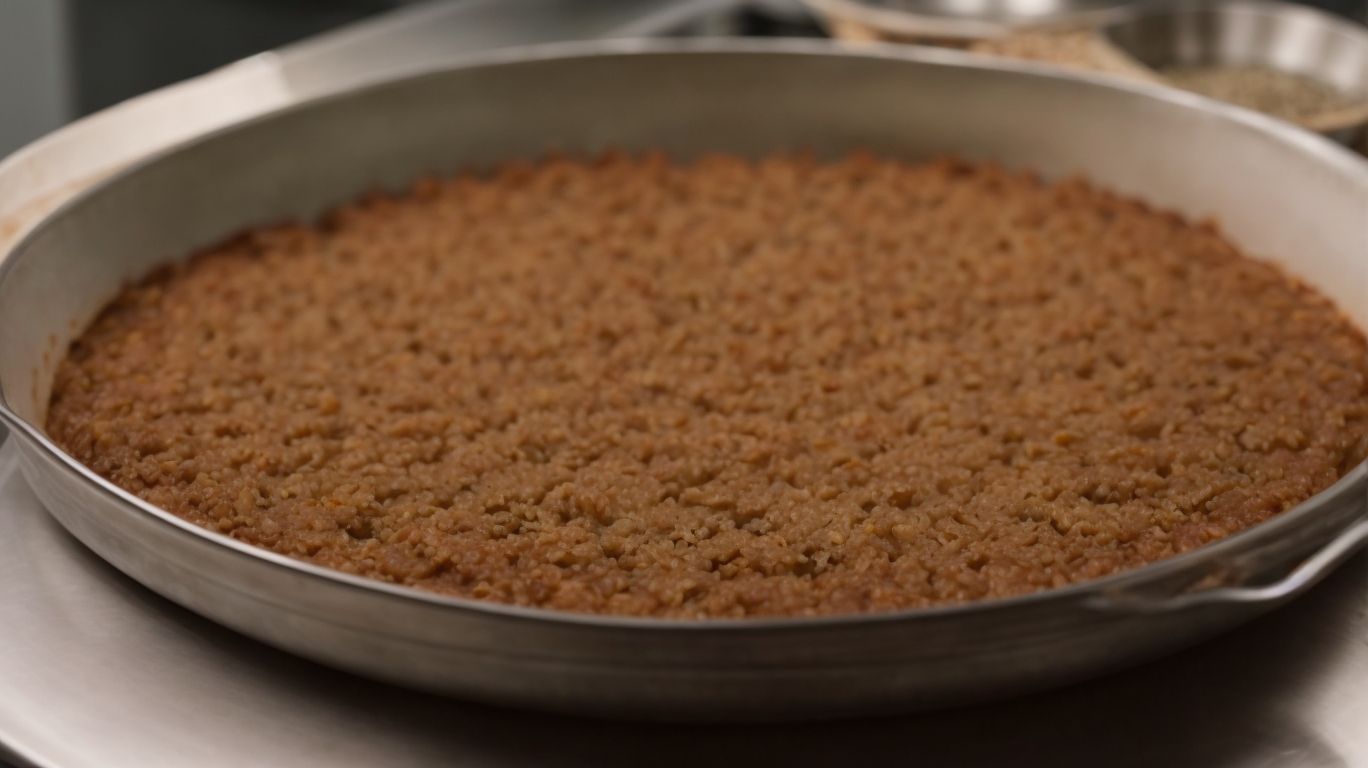
Credits: Poormet.Com – Bradley Thompson
To create Kibbeh for baking, a meticulous step-by-step approach is vital. The process may vary, with the Lebanese version featuring distinct techniques such as incorporating kafta into the mix for a unique flavor profile.
Start by preparing the kibbeh shell, a mixture of bulgur wheat and minced meat, typically lamb or beef. Sauté finely diced onions in olive oil until translucent, then add the bulgur wheat and knead it with the meat until well combined. This shell will serve as both the base and the top layer of the kibbeh dish.
Create the filling by mixing ground meat, onions, pine nuts, and a mix of spices such as cinnamon, allspice, and nutmeg. This filling will add a burst of flavor to each bite.
Soaking the Bulgur Wheat
One of the initial steps in Kibbeh preparation involves soaking bulgur wheat to achieve the desired texture and consistency in the final dish. Proper soaking ensures that the wheat grains are adequately softened and ready for incorporation into the recipe.
When bulgur wheat is soaked, it undergoes a transformation, both in texture and flavor. The grains expand, becoming tender yet retaining a slight chewiness crucial for the signature mouthfeel of Kibbeh. This process not only softens the wheat but also allows it to absorb other ingredients, enhancing the overall taste profile of the dish. Optimal soaking time is key to ensuring the right balance of firmness and tenderness in the wheat, setting the foundation for a delectable Kibbeh.
Preparing the Filling
Creating the filling for Kibbeh involves combining flavorful spices with the essential meatball mixture, ensuring a harmonious blend of tastes and textures. The addition of aromatic spices enhances the overall profile of the dish.
The careful selection and artful combination of spices play a crucial role in the preparation of Kibbeh, creating a depth of flavor that tantalizes the taste buds.
Each spice contributes its unique character, whether it’s the warmth of cumin, the earthiness of coriander, the subtle heat of paprika, or the aromatic touch of cinnamon.
These spices not only add layers of flavor but also complement the savory notes of the meat, infusing the filling with a symphony of tastes.
Mixing the Kibbeh Dough
Mixing the Kibbeh dough requires precision and care to achieve the right consistency and flavor. Incorporating allspice at this stage imparts a distinctive taste that is characteristic of authentic Kibbeh dishes.
As each ingredient is meticulously measured and combined, the allspice stands out for its warm, earthy notes and hint of sweetness, harmonizing with the rich flavors of the meat and subtle undertones of the bulgur wheat. The fragrant aroma of the allspice infuses into the dough, enhancing its overall depth and complexity.
Through gentle kneading and mixing, the dough transforms, taking on a smooth and pliable texture, allowing it to be shaped and molded into various forms, such as patties or stuffed balls. The allspice not only contributes to the flavor profile but also adds a sophisticated layer of warmth and spice, elevating the overall taste experience of the traditional Middle Eastern dish.
Assembling the Kibbeh
Assembling Kibbeh involves shaping the dough around the flavorful filling, creating stuffed croquettes that encapsulate the essence of the dish.
The Lebanese version of assembling may include specific techniques unique to the region.
Traditionally, when making Kibbeh, a mixture of bulgur wheat, minced onions, and ground meat is used to form the outer shell. This shell is then carefully shaped around a savory filling, often composed of minced meat, pine nuts, and a blend of aromatic spices such as cumin and allspice.
In Lebanon, cooks often meticulously craft the croquettes into elongated torpedo shapes, each one imbued with a delicate balance of flavors influenced by the region’s culinary traditions.
Baking Kibbeh in the Oven
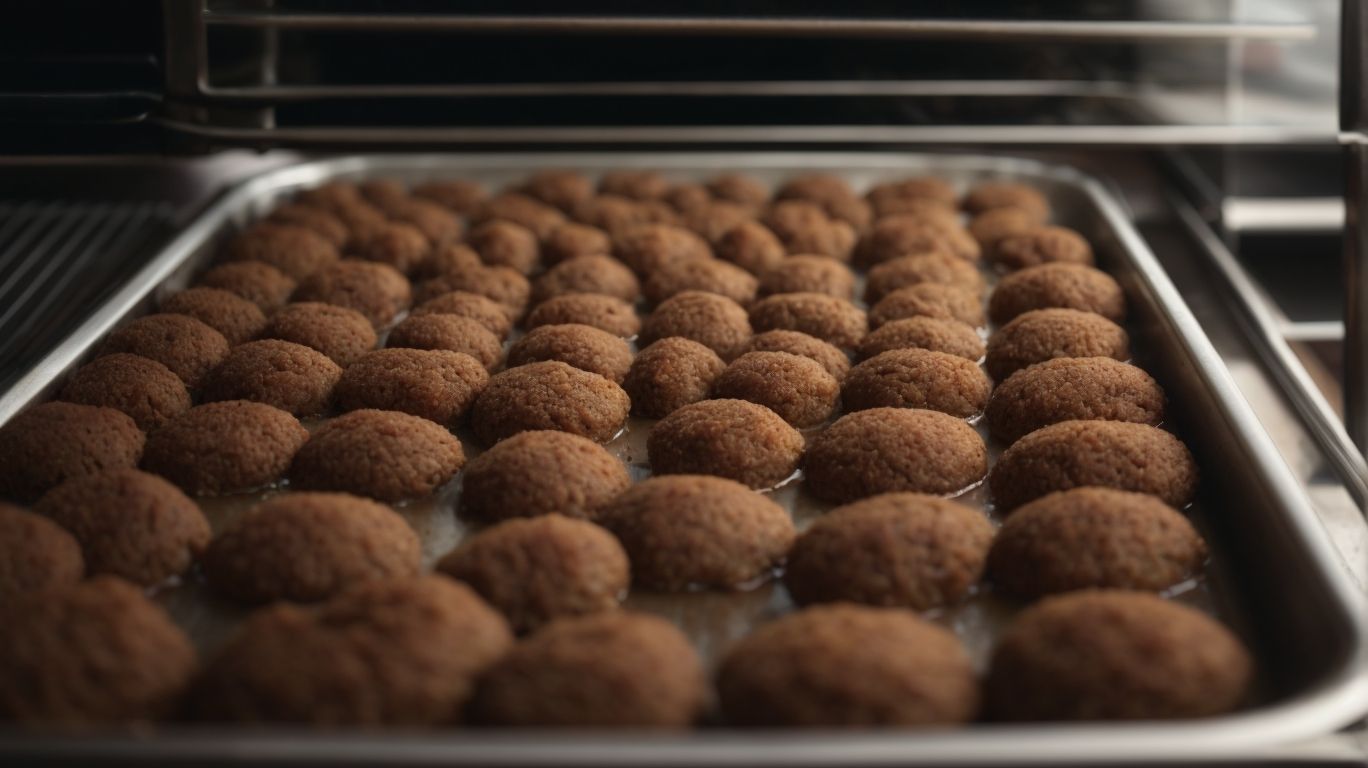
Credits: Poormet.Com – Matthew Lewis
Baking Kibbeh in the oven is the final step in the culinary journey, resulting in a golden-brown dish that exudes irresistible aromas.
The oven’s dry heat envelops the Kibbeh, slowly roasting it to perfection, creating a crisp outer layer that contrasts beautifully with the moist, savory filling inside. The transformation from raw ingredients to a harmonious, aromatic dish is truly mesmerizing, as flavors blend and intensify during the baking process.
While pan Kibbeh offers a quicker alternative, the oven method is favored for its ability to create a uniform, crispy crust that delights both the eyes and the taste buds. To ensure readiness, a knife inserted into the center should come out hot, indicating that the dish is cooked through.
Preheating the Oven
Ahead of baking Kibbeh, preheating the oven is a crucial step to ensure even cooking and optimal results. The correct oven temperature sets the stage for the dish’s perfect texture and flavor profile.
By preheating the oven, you allow the entire dish to cook consistently, ensuring that each bite is cooked to perfection. Without this initial step, the Kibbeh may end up unevenly cooked, with parts being overcooked while others remain undercooked. The ideal oven temperature not only affects the cooking time but also plays a vital role in preserving the dish’s moisture and tenderness. This precision in temperature control is what separates a mediocre Kibbeh from a truly delicious one.
Placing the Kibbeh in the Oven
Placing the assembled Kibbeh in the preheated oven marks a crucial stage where the dish begins its transformation into a delectable culinary creation. The even distribution of heat ensures uniform baking and the development of flavors.
During the baking process, the oven’s consistent warmth permeates the Kibbeh, allowing the ingredients to meld together harmoniously. This stage is essential for achieving a golden-brown crust that seals in the juicy, flavorful interior. The uniform heat distribution also plays a key role in preventing uneven cooking and ensuring that each bite maintains the intended texture and taste. Properly baking the Kibbeh guarantees a mouthwatering result that delights the senses and showcases the intricate layers of spices and meats.
Checking for Doneness
To ascertain if the Kibbeh has reached the desired level of doneness, careful checking through visual and tactile cues is essential. The dish should exhibit a golden-brown color and a firm texture when ready to be served.
Another important indicator to consider is the internal temperature of the Kibbeh. Using a meat thermometer, ensure that the internal temperature reaches a safe level to guarantee that the dish is fully cooked. Observing the edges of the Kibbeh for a slight crispiness can also signal its readiness.
When gently pressing on the center of the Kibbeh, it should feel slightly firm but still have a bit of springiness, indicating a perfect balance of moisture and cooking.
Serving and Storing Baked Kibbeh
Serving freshly baked Kibbeh offers a delightful culinary experience, especially when accompanied by sides like Mediterranean chickpea salad. Properly storing leftover Kibbeh ensures its flavors remain intact for future enjoyment.
When serving freshly baked Kibbeh, it’s vital to present it with a vibrant array of side dishes to complement its rich flavors. The Mediterranean chickpea salad, with its refreshing blend of fresh vegetables, aromatic herbs, and zesty dressing, serves as an ideal accompaniment to the warm and savory Kibbeh.
Ensuring that any leftover Kibbeh is stored correctly is crucial in maintaining its quality and taste. Storing it in an airtight container in the refrigerator helps preserve the flavors and texture, allowing for a delicious meal even on subsequent days.
Serving Suggestions
When serving Baked Kibbeh, consider pairing it with traditional condiments like tahini sauce for an authentic Middle Eastern dining experience. The creamy texture and nutty flavor of tahini complement the savory notes of the dish.
The tangy undertones of tahini sauce cut through the richness of the Baked Kibbeh, providing a perfect balance of flavors. Drizzle the tahini sauce generously over the baked kibbeh or serve it on the side for dipping. The versatility of tahini allows you to customize the intensity of its flavor profile according to your preference.
The earthy sesame seed base of tahini sauce adds a layer of complexity to the dish, enhancing its overall taste. The smooth consistency of tahini creates a luscious coating on the kibbeh, elevating each bite into a delightful culinary experience.
Storing Leftover Kibbeh
To preserve the flavors of leftover Kibbeh, proper storage in airtight containers in the refrigerator is recommended. This ensures the dish retains its taste and texture for an extended period, allowing for convenient reheating and enjoyment.
When storing leftover Kibbeh, it is crucial to package it properly to prevent moisture loss and exposure to air, which can lead to flavor deterioration. Airtight containers create a barrier against external elements, maintaining the dish’s integrity. Placing the Kibbeh in the coldest part of the refrigerator, typically the bottom shelf, helps regulate temperature fluctuations, further preserving its quality.
By following these simple yet effective storage practices, you can prolong the freshness of your Kibbeh and ensure that each reheated portion delights your taste buds just as much as the initial serving.”
Tips and Tricks for Perfectly Baked Kibbeh
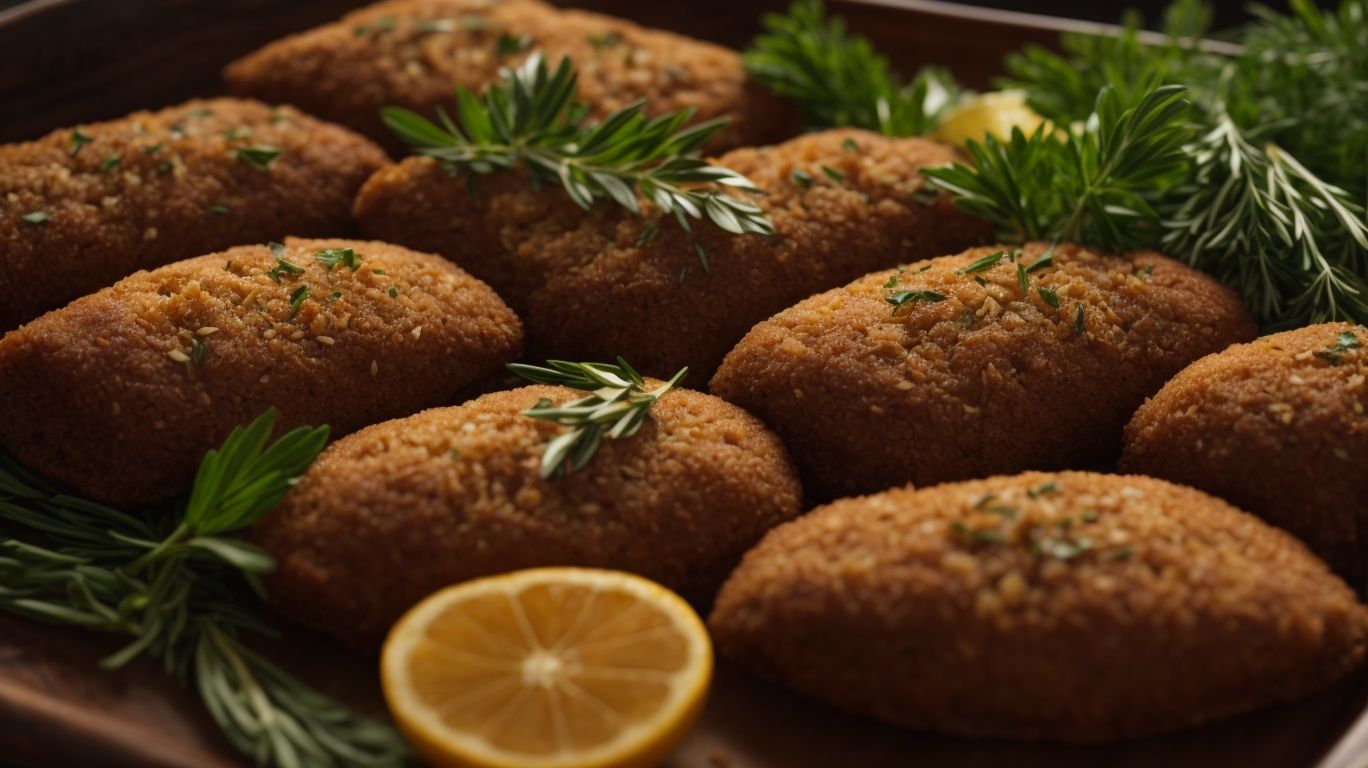
Credits: Poormet.Com – David Miller
Achieving the perfect baked Kibbeh involves incorporating expert tips and tricks, such as using a food processor for efficient ingredient blending. For those with dietary preferences, gluten-free alternatives can be seamlessly integrated into the recipe.
When preparing your Kibbeh mixture, the food processor plays a vital role in achieving the ideal consistency by effortlessly combining the meat, bulgur, and spices. This not only saves time but also ensures a uniform texture, crucial for the overall taste and texture of the dish. Gluten-free adaptations can be easily achieved by substituting traditional bulgur with gluten-free options like quinoa or rice, maintaining the authentic flavors while catering to a wider audience with dietary restrictions.
Using a Food Processor
Employing a food processor for mixing Kibbeh ingredients streamlines the preparation process and ensures a uniform blend of flavors and textures. This modern kitchen tool expedites the traditionally labor-intensive task, making cooking more efficient.
The food processor saves considerable time in grinding meat and mixing spices, key components in preparing authentic Kibbeh. Its swift processing power can finely dice vegetables and herbs, crucial for achieving the perfect consistency in this Middle Eastern dish.
The convenience of this appliance lies in its ability to handle multiple tasks with precision, like kneading dough effortlessly for the Kibbeh shell, all in one compact unit. Its easy cleanup adds another layer of convenience to the cooking experience, eliminating the need for numerous utensils and cutting down on post-cooking chores.
Adding Extra Flavor
Enhancing the flavor profile of Kibbeh can be achieved by experimenting with additional spices and seasoning combinations inspired by Lebanese dishes. The incorporation of unique spice blends can elevate the dish to new culinary heights.
Lebanese cuisine is renowned for its rich array of spices, from aromatic cumin to zesty sumac. By infusing these flavors into your Kibbeh, you can create a dish that tantalizes the taste buds with each bite. Consider adding a touch of warming cinnamon or earthy cardamom to complement the lamb or beef in the Kibbeh mixture.
For a kick of heat, try incorporating a pinch of fiery Aleppo pepper or smoky paprika. These spices not only add complexity to the dish but also pay homage to the vibrant flavors of Lebanese cooking.
Using Different Types of Meat
Variety in Kibbeh can be introduced by experimenting with different types of meat beyond the traditional ground beef, such as lamb or a blend including kafta. This diversification adds unique flavors and textures to the dish, appealing to a broader range of palates.
When using lamb in Kibbeh, the meat’s slightly gamey flavor can infuse the dish with a rich depth, complementing the spices and cracked wheat. On the other hand, opting for kafta, a mix of ground beef, parsley, onion, and various seasonings, introduces a burst of savory notes and a juicier texture to the Kibbeh.
These meat alternatives not only diversify the taste profile of the dish but also offer a new dimension in terms of texture. The succulent lamb or flavorful kafta can create a more dynamic and exciting culinary experience, enticing both traditionalists and adventurous food enthusiasts alike.
Conclusion
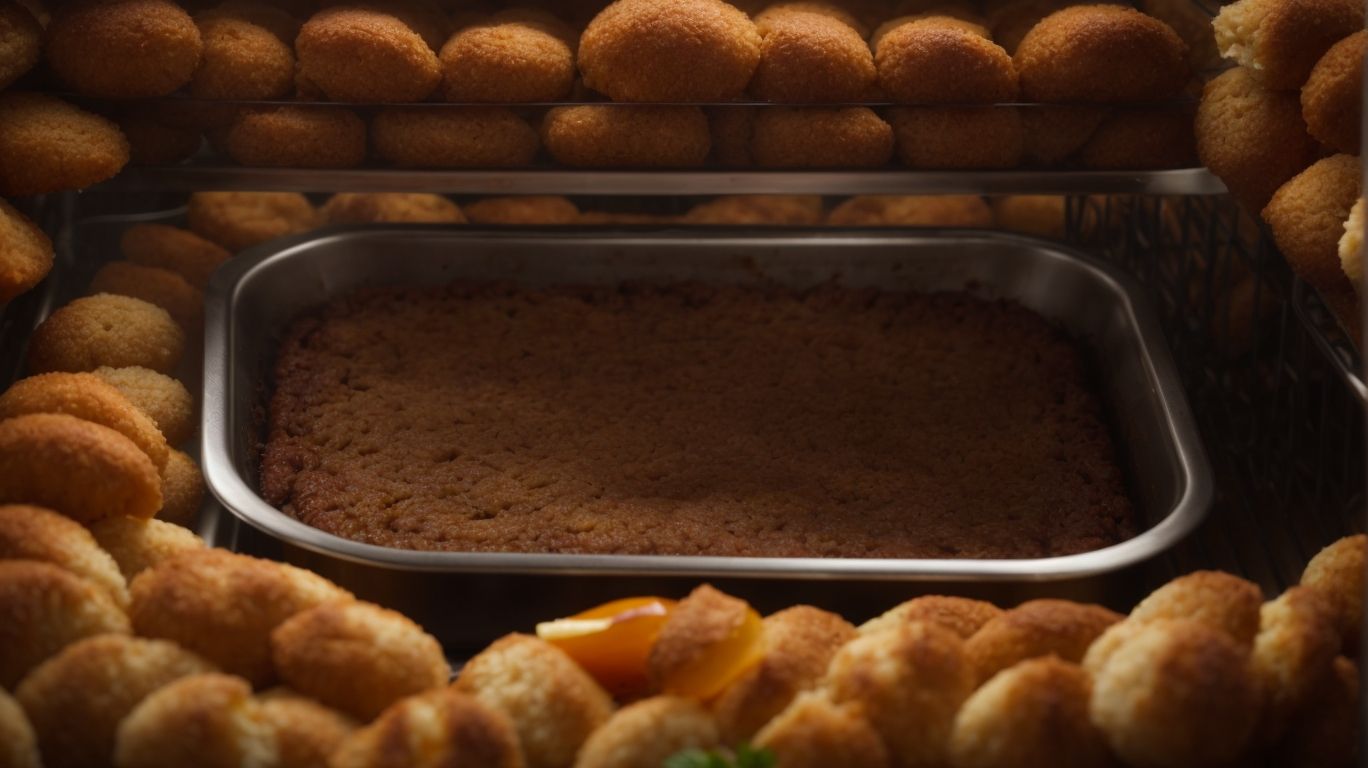
Credits: Poormet.Com – Jose Lewis
The art of preparing Kibbeh for baking is a culinary journey enriched with heritage, flavors, and family traditions. Recipes like Aunt Louise’s Baked Kibbeh showcase the timeless appeal and cultural significance of this beloved Middle Eastern dish.
When you embark on the process of making Kibbeh, it’s not just about mixing ingredients, but about connecting with centuries-old customs passed down through generations. The act of shaping the ground meat and bulgur wheat mixture by hand signifies care and attention to detail, reflecting the deep-rooted respect for tradition.
As the fragrant aroma of spices fills the kitchen, memories of cozy family gatherings and festive celebrations come flooding back, making each bite of Kibbeh a nostalgic journey to the heart of Middle Eastern hospitality.
Frequently Asked Questions
How to Bake Kibbeh in Oven?
1. What ingredients do I need to bake kibbeh in the oven?
To bake kibbeh in the oven, you will need ground beef, bulgur wheat, onions, parsley, spices, and olive oil.
2. Can I substitute the beef with another type of meat?
Yes, you can replace the beef with lamb, chicken, or even a vegetarian option like mushrooms.
3. How do I prepare the bulgur wheat for kibbeh?
Soak the bulgur wheat in water for 30 minutes, then drain and squeeze out any excess water before using it in the kibbeh mixture.
4. Do I need to preheat the oven before baking kibbeh?
Yes, it’s important to preheat the oven to ensure even cooking and a crispy exterior for the kibbeh.
5. How long should I bake kibbeh in the oven?
Bake kibbeh in the oven at 375°F for 25-30 minutes, or until the edges are golden brown.
6. Can I freeze unbaked kibbeh for later use?
Yes, you can freeze unbaked kibbeh in an airtight container for up to 3 months. Just thaw it in the refrigerator before baking in the oven.

